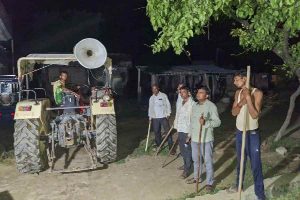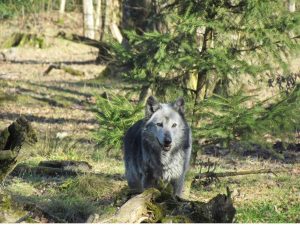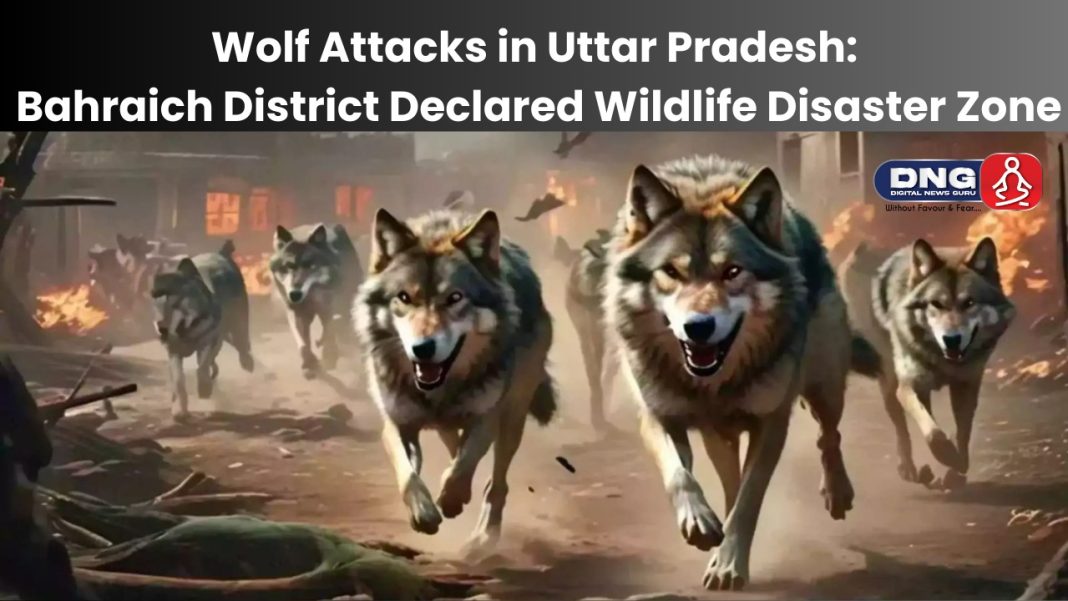DIGITAL NEWS GURU UTTAR PRADESH DESK:
Wolf Attacks in Uttar Pradesh: Bahraich District Declared Wildlife Disaster Zone
In recent weeks, a wave of wolf attacks has terrorized the residents of Uttar Pradesh’s Bahraich district, with multiple fatalities and severe injuries reported. These attacks have instilled fear across the region, leading to widespread panic as local authorities scramble to address the situation.
The state government has declared Bahraich a “wildlife disaster” zone, and special teams of forest officials and shooters have been deployed to neutralize the threat. The rising number of wolf attacks has prompted both immediate responses from the authorities and deep reflection on the underlying factors contributing to these encounters between humans and wildlife.
The Surge in Wolf Attacks

Since the beginning of August, the wolf attacks in Bahraich have resulted in at least six deaths and left several more injured. Most of the victims have been young children, with many of the attacks taking place in villages and farmlands where children and adults tend to livestock or perform daily chores. The local forest department estimates that at least one rogue wolf, potentially driven by hunger or habitat loss, is responsible for the sudden aggression.
Reports indicate that in many cases, the wolf has struck during the early morning or late evening hours, targeting individuals who are often alone or in small groups. The victims, particularly children, have had little chance to defend themselves, making the attacks all the more terrifying for the local population. Given the ferocity of the attacks, residents of Bahraich and surrounding villages have been on high alert, taking precautions such as staying indoors after dark and organizing groups to watch over vulnerable areas.
Declaring a “Wildlife Disaster Zone”

In response to the crisis, the Uttar Pradesh government officially declared the affected areas in Bahraich as a “wildlife disaster” zone. This designation enables the rapid mobilization of resources to combat the situation and offers greater protection to the residents. The move allows for more streamlined coordination between the forest department, local police, and other emergency services. Moreover, financial compensation for the victims’ families and assistance for the injured are being fast-tracked under the state’s disaster relief guidelines.
Additionally, the government has dispatched trained shooters to the region to track and, if necessary, neutralize the rogue wolves responsible for the attacks. Teams of forest officials are working around the clock to locate the animals and assess the extent of the problem. While shooting wolves is generally considered a last resort, the authorities argue that the urgency of the situation leaves them with few options. The goal is to prevent further loss of life and restore a sense of security to the local communities.
Underlying Causes of the Attacks

Experts have weighed in on the reasons behind the sudden uptick in wolf attacks. One of the primary factors is believed to be habitat loss. In recent years, large-scale deforestation and expansion of agricultural land have reduced the natural habitats of wolves, forcing them to venture closer to human settlements in search of food. The depletion of their natural prey has further exacerbated the situation, making livestock—and sometimes humans—attractive targets for the starving predators.
Climate change may also be contributing to the increase in human-wildlife conflict. Rising temperatures and changing rainfall patterns have affected the availability of water and food resources in forests, leading wild animals to migrate in search of more hospitable environments. This could explain why wolves, typically shy creatures that avoid human interaction, have become more aggressive and willing to attack people.
Another contributing factor is the breakdown of traditional wolf populations and social structures. Normally, wolves live and hunt in packs, but the rogue wolves responsible for the attacks in Bahraich appear to be acting alone. Experts speculate that these wolves may have been separated from their packs due to territorial disputes or environmental pressures, which can lead to erratic and dangerous behavior. When wolves operate in isolation, their chances of survival drop, and they may resort to desperate measures to find food.
Community Response and Local Impact

The fear of wolf attacks has transformed daily life in Bahraich. Schools in affected areas have advised students to avoid traveling alone, particularly in the early morning or evening. Farmers have started working in groups and using noise-making devices to scare away potential predators. Vigilance has become the norm as villagers patrol their surroundings, hoping to prevent further attacks. Many families are keeping children indoors, drastically altering their routines out of fear for their safety.
Local religious and cultural beliefs have also played a role in shaping community responses. In some areas, villagers have performed rituals or prayers, seeking divine intervention to stop the attacks. These practices highlight the deep connection between rural communities and the natural world, where animals are often seen as both threats and sacred beings.
While the immediate focus is on managing the crisis, there is also growing concern about the long-term implications of human-wildlife conflict in the region. With wolves venturing closer to human settlements, the question arises of how to better manage wildlife populations and mitigate the impacts of habitat destruction. Conservationists are urging the government to develop more sustainable solutions that balance the needs of both human and wildlife populations.
Government and Expert Intervention

In the wake of the attacks, wildlife experts and conservation organizations have called for a comprehensive review of the situation. While immediate action, such as deploying shooters, is necessary to protect lives, there is a need for long-term strategies that address the root causes of the problem. Measures such as creating wildlife corridors, strengthening forest management practices, and promoting coexistence strategies between humans and predators are essential for preventing future conflicts.
The state government is also exploring compensation and rehabilitation plans for the victims’ families, as well as measures to enhance community awareness about dealing with wildlife threats. Public education campaigns are being considered to teach locals how to minimize risks, recognize signs of wolf activity, and report suspicious animal behavior to the authorities.
YOU MAY ALSO READ: From Wrestling Mats to Politics: Bajrang Punia and Vinesh Phogat’s Entry into Congress Ahead of Haryana Elections








